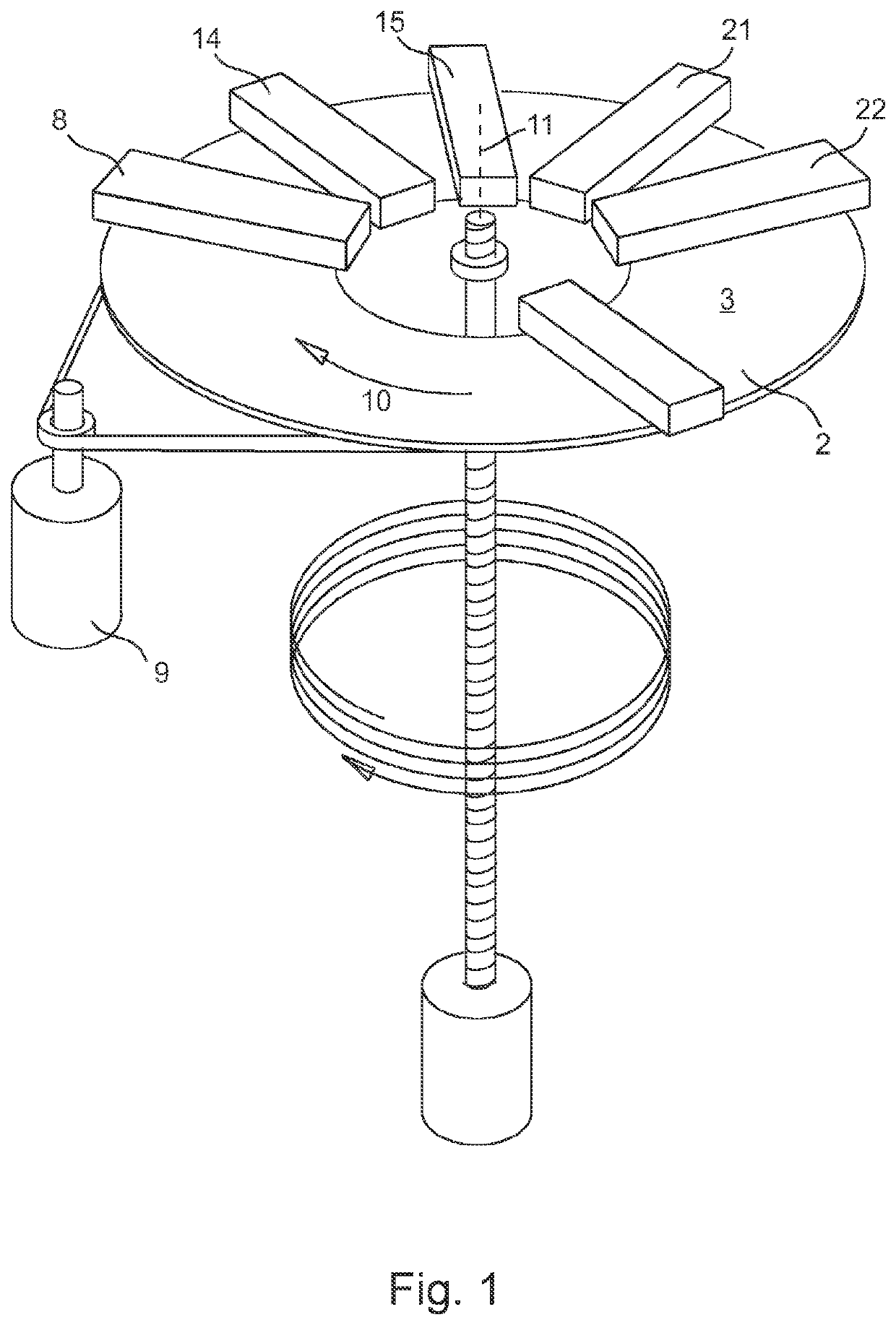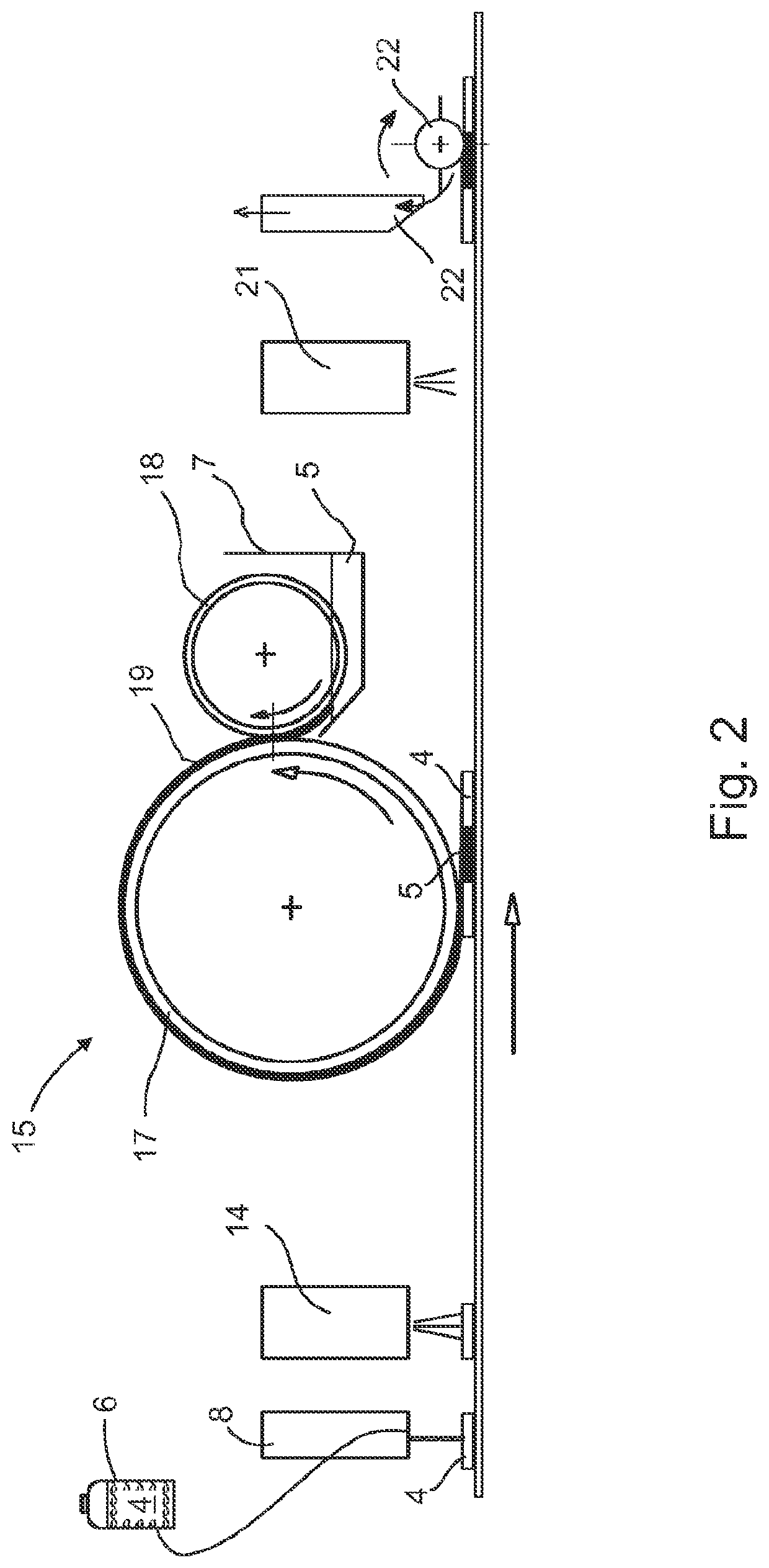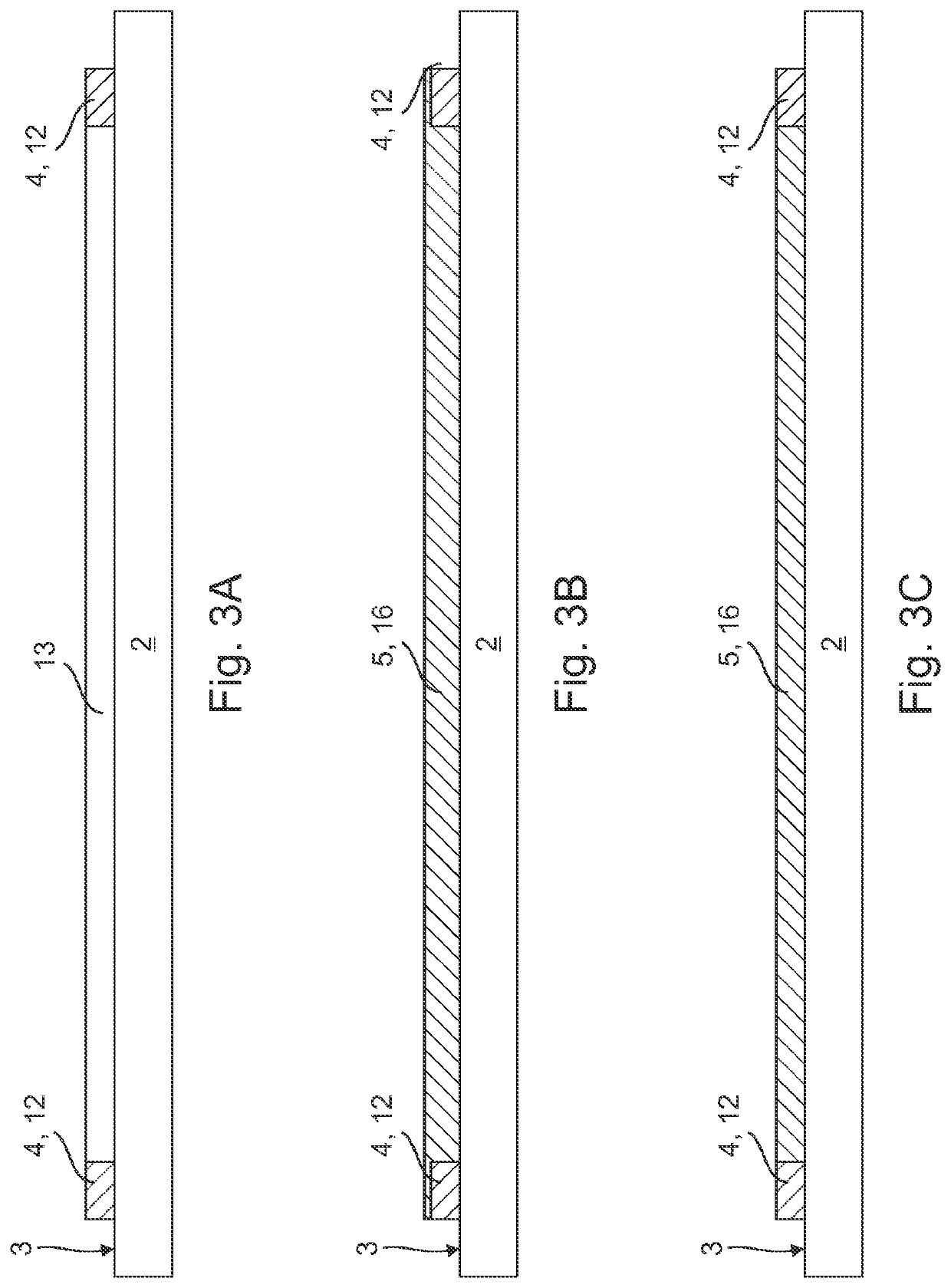Method for Producing a Three-Dimensional Shaped Object by Means of Layer-by-Layer Material Application
a technology of layer-by-layer material and application, which is applied in the direction of additive manufacturing with liquids, manufacturing tools, manufacturing processes, etc., can solve the problems of only able to withstand minimal stresses, objects produced from such materials, and generally cannot be dispensed through jets, etc., to achieve rapid material application and great precision
- Summary
- Abstract
- Description
- Claims
- Application Information
AI Technical Summary
Benefits of technology
Problems solved by technology
Method used
Image
Examples
Embodiment Construction
[0062]In a method for producing a three-dimensional mold and a three-dimensional shaped object 1 by means of layer-by-layer material application, geometry data for the shaped object 1 are made available by a control unit that communicates with a computer on which software is running. Furthermore, a plate-shaped support part 2 having a base surface 3 arranged in a horizontal plane, for holding the shaped object 1, is made available. As can be seen in FIG. 1, the base surface 3 essentially has the shape of a circular ring disk. However, other embodiments are also conceivable, in which the base surface 4 particularly can have the shape of a full circular disk or can be configured to be rectangular.
[0063]Furthermore, in the method a liquid first material 4 that can be solidified, a liquid second material 5 that can be solidified, different from the first, and water as a solvent for the solidified first material 4 are made available. The solidified second material 5 cannot dissolve in th...
PUM
| Property | Measurement | Unit |
|---|---|---|
| Time | aaaaa | aaaaa |
| Viscosity | aaaaa | aaaaa |
| Viscosity | aaaaa | aaaaa |
Abstract
Description
Claims
Application Information
 Login to View More
Login to View More - R&D
- Intellectual Property
- Life Sciences
- Materials
- Tech Scout
- Unparalleled Data Quality
- Higher Quality Content
- 60% Fewer Hallucinations
Browse by: Latest US Patents, China's latest patents, Technical Efficacy Thesaurus, Application Domain, Technology Topic, Popular Technical Reports.
© 2025 PatSnap. All rights reserved.Legal|Privacy policy|Modern Slavery Act Transparency Statement|Sitemap|About US| Contact US: help@patsnap.com



